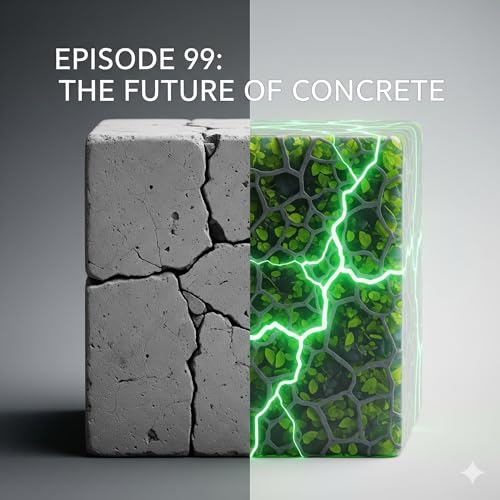
Episode 99 - The Future of Concrete
No se pudo agregar al carrito
Add to Cart failed.
Error al Agregar a Lista de Deseos.
Error al eliminar de la lista de deseos.
Error al añadir a tu biblioteca
Error al seguir el podcast
Error al dejar de seguir el podcast
-
Narrado por:
-
De:
This episode takes us on a journey deep into the heart of our modern world to explore the story of its most essential and ubiquitous building material: concrete. The discussion begins in ancient Rome, where a surprisingly sophisticated understanding of cement chemistry, particularly the use of pozzolanic ash, allowed the Romans to create a remarkably durable and versatile concrete that has, in some cases, lasted for millennia. This ancient wisdom, the episode notes, was largely lost for centuries, only to be rediscovered and reinvented in the 19th century with the development of Portland cement, the key that unlocked concrete's global potential.
The conversation then delves into the science of modern concrete, explaining how this seemingly simple mix of cement, water, and aggregates undergoes a complex chemical reaction known as hydration to form a strong, durable, and incredibly versatile material. It also highlights the critical role of steel reinforcement, which gives concrete the tensile strength it lacks, allowing for the creation of everything from massive bridges to towering skyscrapers. However, the episode also confronts the immense environmental cost of our reliance on this "liquid stone," acknowledging that the production of Portland cement is a major contributor to global carbon emissions.
The latter half of the episode explores the exciting and rapidly evolving world of sustainable concrete. It discusses the various ways that researchers and engineers are working to "reinvent" this ancient material for the 21st century, from using waste products like fly ash and slag to reduce the amount of cement needed, to developing innovative new technologies that can actually capture and store carbon within the concrete itself. The episode also touches on the importance of "dematerialization," the principle of designing more efficient structures that simply use less concrete to begin with. It concludes by affirming that while concrete is here to stay, its future depends on our ability to make it not just strong but also smart, sustainable, and truly fit for a new era of building.


